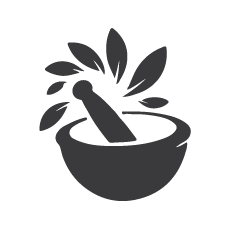





Welcome to our website. If you continue to browse and use this website, you are agreeing to comply with and be bound by the following terms and conditions of use, which together with our privacy policy govern Washpool Supply Co. Pty Ltd’s relationship with you in relation to this website. If you disagree with any part of these terms and conditions, please do not use our website.
The term ‘Washpool Supply Co. Pty Ltd’ or ‘us’ or ‘we’ refers to the owner of the website whose registered office is 4/7 Reeves Road, STANTHORPE QLD 4380 . Our ABN is 18655725670. The term ‘you’ refers to the user or viewer of our website.
The use of this website is subject to the following terms of use:
This privacy policy sets out how we use and protect any information that you give us when you use this website.
We are committed to ensuring that your privacy is protected. Should we ask you to provide certain information by which you can be identified when using this website, then you can be assured that it will only be used in accordance with this privacy statement.
We may change this policy from time to time by updating this page. You should check this page from time to time to ensure that you are happy with any changes.
What we collect
We may collect the following information:
What we do with the information we gather
We require this information to understand your needs and provide you with a better service, and in particular for the following reasons:
Security
We are committed to ensuring that your information is secure. In order to prevent unauthorised access or disclosure, we have put in place suitable physical, electronic and managerial procedures to safeguard and secure the information we collect online.
Cookies & web beacons
We use third parties that use cookies, web beacons, and other storage technologies to collect or receive information from your visit to our site and elsewhere on the internet and we may use that information to provide measurement services and target ads
A cookie is a small file which asks permission to be placed on your computer's hard drive. Once you agree, the file is added and the cookie helps analyse web traffic or lets you know when you visit a particular site. Cookies allow web applications to respond to you as an individual. The web application can tailor its operations to your needs, likes and dislikes by gathering and remembering information about your preferences.
We use traffic log cookies to identify which pages are being used. This helps us analyse data about webpage traffic and improve our website in order to tailor it to customer needs. We only use this information for statistical analysis purposes and then the data is removed from the system.
Overall, cookies help us provide you with a better website by enabling us to monitor which pages you find useful and which you do not. A cookie in no way gives us access to your computer or any information about you, other than the data you choose to share with us.
You can choose to accept or decline cookies. Most web browsers automatically accept cookies, but you can usually modify your browser setting to decline cookies if you prefer. This may prevent you from taking full advantage of the website.
We use the “visitor action pixels” from Facebook on our website. This allows user behaviour to be tracked after they have been redirected to our website by clicking on a Facebook ad. This enables us to measure the effectiveness of Facebook ads for statistical and market research purposes. The data collected in this way is anonymous to us, i.e. we do not see the personal data of individual users. However, this data is stored and processed by Facebook. Facebook may link this information to your Facebook account and also use it for its own promotional purposes.
We use Google Analytics to help analyze how visitors use our site. Google Analytics uses cookies to collect information such as how often users visit our site, what pages they visit, and what other sites they used prior to coming to our site. We use the information we get from Google Analytics only to improve our service. Google Analytics collects the IP address assigned to you on the date you visit our site, but not your name or other personally identifying information. We do not combine the information generated through the use of Google Analytics with your personal information. Although Google Analytics plants a persistent Cookie on your web browser to identify you as a unique user the next time you visit our site, the Cookie cannot be used by anyone but Google.
Links to other websites
Our website may contain links to other websites of interest. However, once you have used these links to leave our site, you should note that we do not have any control over that other website. Therefore, we cannot be responsible for the protection and privacy of any information which you provide whilst visiting such sites and such sites are not governed by this privacy statement. You should exercise caution and look at the privacy statement applicable to the website in question.
Controlling your personal information
You may choose to restrict the collection or use of your personal information in the following ways:
We will not sell, distribute or lease your personal information to third parties unless we are required by law to do so.
If you believe that any information we are holding on you is incorrect or incomplete, please write to or email us as soon as possible. We will promptly correct any information found to be incorrect.
